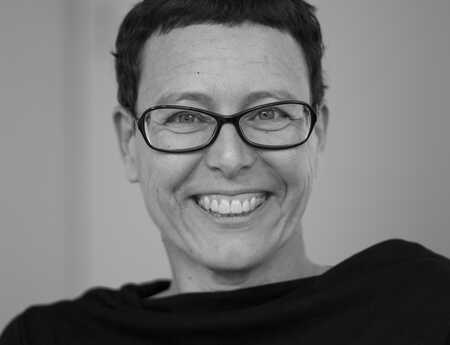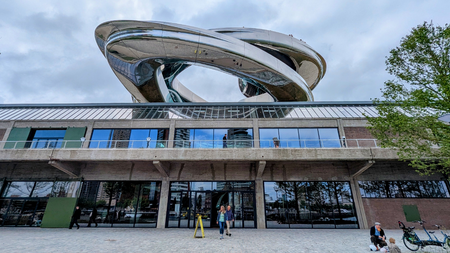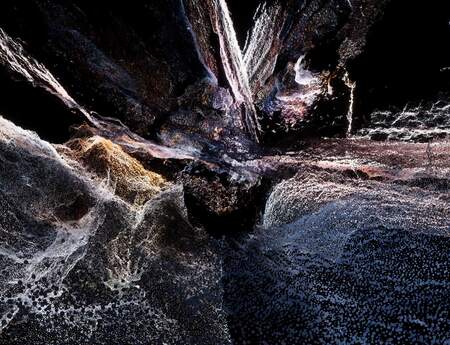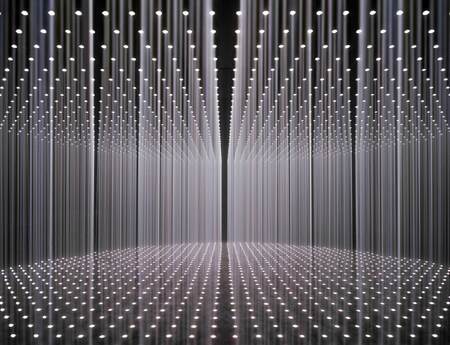Fenix Museum Rotterdam: A new international art museum about migration
Fenix, a new international art museum, opened to the public on a landmark site in Rotterdam’s City Harbour in May 2025. In the museum, themes around migration are being explored through the lens of art. Here you will find a huge photo exhibition, an immense collection of suitcases and two vast gallery spaces filled with contemporary art.
The museum is located in a restored warehouse, which has been transformed by the Chinese architect Ma Yansong of MAD Architects. The architect added a staircase in the form of a tornado in the middle of the building. Indeed, the building is simply great, but what about the collection? Is it worthwhile to pay a visit?
Building with a view
The Fenix building consists of 16,000 sqm and dates from 1923. It was once part of the largest warehouse in the world. It served as a building for storage and shipping for the Holland America Line (HAL). The HAL was a company that facilitated the journeys of millions of migrants in the 19th and 20th centuries who arrived and departed from the surrounding docks in Rotterdam. Visitors will now immediately see The Tornado, a double-helix staircase that climbs from the ground floor and flows up and out of the rooftop onto a viewing platform hovering above the city. It offers a magnificent view of Rotterdam’s inner skyscraper city. Ma Yansong, Founder of MAD Architects: “The Tornado is all about the future, but it’s rooted in the past. For me, it is a metaphor for the journeys of migrants who passed through this building.”
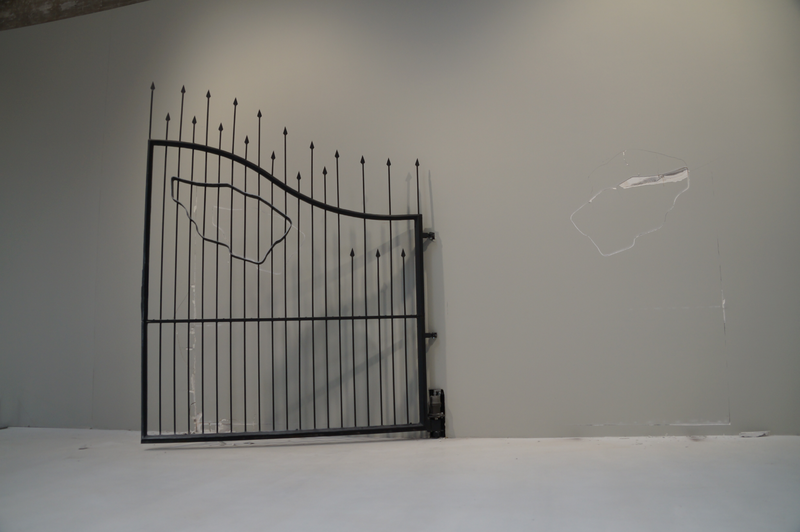
A diverse collection of artworks
The museum houses a series of vast gallery spaces across two floors, with an intriguing photo and art collection that is still growing. The art exhibition All Directions on the first floor showcases about 150 artworks and objects acquired over the past five years. The exhibition is extremely spacious and contains powerful artworks such as the iron gate made by Shilpa Gupta (Untitled, 2009), which bangs every 30 minutes against a wall of plaster. With each bang of the gate, the wall behind it crumbles a bit more. Gupta exposes what a border means to those who are excluded: a merciless blow. But eventually every wall will collapse like the Berlin Wall, which reopened in 1989; one of its segments is now on view at Fenix, complete with graffiti.
And there is much more interesting art to discover: a beautiful photo series called Diaspora by Senegalese photographer Omar Victor Diop, in which he shows staged self-portraits inspired by historical paintings of African men from between the sixteenth and nineteenth centuries. He links the past to the present by reincorporating a football-related object into each image, telling us that African football players nowadays are admired, but at the same time, they are discriminated against all over the world.
Commissioned by Fenix, the Israeli artist Efrat Zehavi created 116 small portraits in clay of strangers passing by while asking them “Where are you going?” The portraits consist of the heads of the strangers, skewered on thin sticks and placed on a high tabletop. You do find some familiar faces and all kinds of skin colours and accompanying races on the tabletop. A great combination is formed by the work Almost There by Narges Mohammadi and The Bottari Truck from South Korean artist Kimsooja. Both installations are showcased close to each other; you immediately see the connection. Kimsooja shows an old Peugeot completely packed by fugitives on the run, and the work of Mohammadi consists of several pieces of furniture in clay, placed close together, as if ready to be moved abroad. Other artists featured in this exhibition: Francis Alÿs, Sophie Calle, Jeremy Deller, Rineke Dijkstra, Alfredo Jaar, William Kentridge, Steve McQueen, Adrian Paci, Gordon Parks, Grayson Perry, Ugo Rondinone, Yinka Shonibare, Alfred Stieglitz, Bill Viola, and Danh Vō.
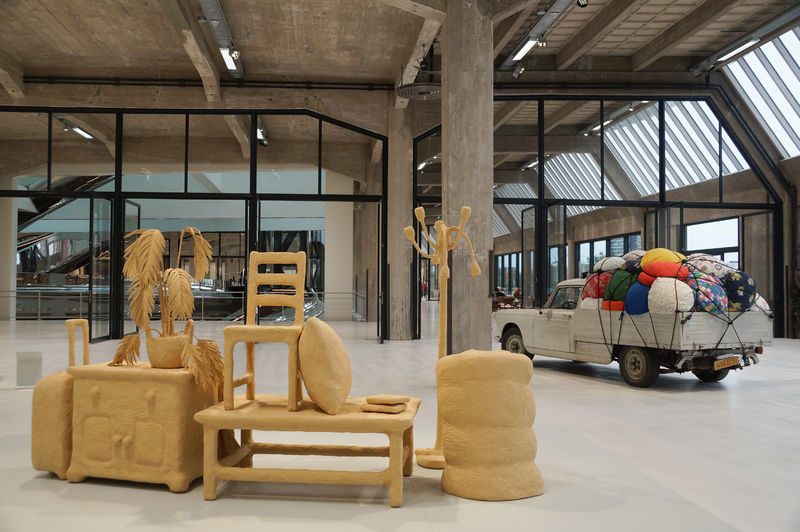
Suitcases and photography
On the ground floor of the museum you will find two exhibitions, one called Suitcase Maze with a collection of more than two thousand suitcases; here you can listen to the stories of their former owners on an audio tour. The other exhibition on the ground floor is called The Family of Migrants, with more than 194 photographs about migration, bringing together photographs from fifty-five countries. The works range from the late nineteenth century to the present day and are a mix of documentary images, portraits and photojournalism drawn from international archives, museum collections, image banks, and newspapers. There you clearly see the diverse reasons for emigrating. The visitor is confronted by the tragedies of war and the devastating power of wartime bombing or the anguish caused by climate change that sets people to flee. You see the hardships they must endure during their long journey, which is by no means always successful. But there is always a feeling of hope inside these photos. For example: a photo of Dutch people leaving Rotterdam by ship in the fifties, travelling to the US or Canada for a better life. Or a photo of the happy girl Cidra, who fled to Sweden with her uncle Ahmed and aunt Jihan. In the photo she calls her mother, who stayed behind in Syria. And what to think of the Christian bride and Islamic groom – dressed all in white – in the midst of the ruins of Beirut? The Family of Migrants captures the heart of the visitor more than anything else in this museum. (Photographers featured include Abbas, Eva Besnyö, Chien-Chi Chang, Fouad Elkoury, Robert de Hartogh, Lewis Hine, Ata Kandó, Dorothea Lange, Steve McCurry, Yasuhiro Ogawa, Emin Özmen and Sergey Ponomarev.)
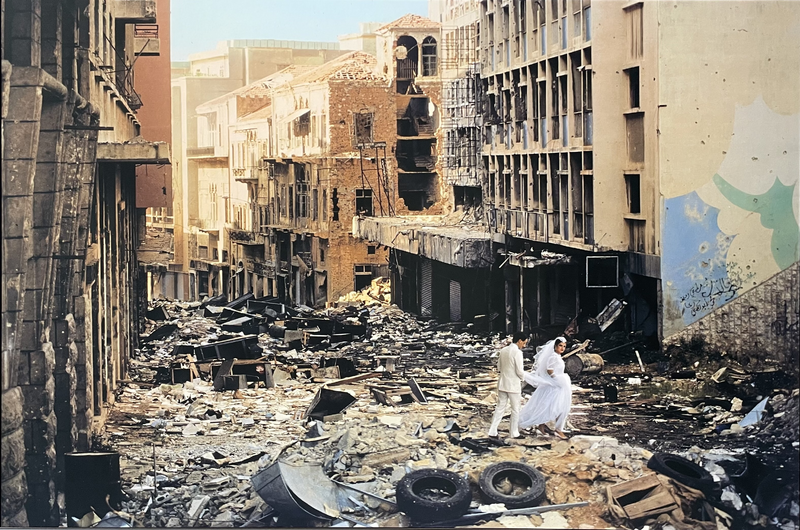
The story of Fenix
Anne Kremers, Director of Fenix: “The story of Fenix is inextricably linked to Rotterdam and its many communities, but that story is also the world's. It is a story of arrivals and departures and of constant change to face the future. From the crossing of the Berlin Wall to the departure for the USA on the great steamships to the arrival of new communities from every part of the world to build, to create, to learn. Fenix is a mirror to the experience and the stories of people from everywhere, told through the lens of art.”
However, something is still missing in the exhibitions at Fenix: think of the many anti-immigration statements nowadays, made by far-right movements in Europe and the US, such as Wilders with his PVV in the Netherlands or the AFD in Germany. There are no signs of these protest movements in Fenix. As for now, under Donald Trump's leadership, large numbers of undocumented immigrants are being deported from the United States; the images of these brutal deeds should also be shown in Fenix.
Conclusion
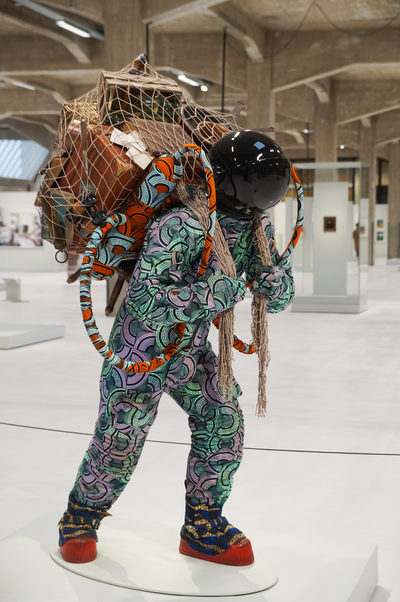
Fenix offers a neutral view about immigration and its causes, which are primarily humanitarian, and seen from the migrant’s perspective. But immigration also has a major impact on the existing inhabitants of a country, who in the best-case scenario welcome the newcomers but often are protesting against their arrival. Of course, it is more comfortable and less confronting to show the refugee Astronaut IX by Yinka Shonibare. A lone figure carries a net bulging with belongings: a teapot, a lamp, letters, a stool, and a suitcase. It is the nomadic astronaut in search of a new home on a safe planet. Shonibare reflects with this work on the far-reaching effects of climate change and the forced migration it will increasingly cause. What will we do when our planet is no longer habitable?
Etienne Boileau wrote this article in English.


